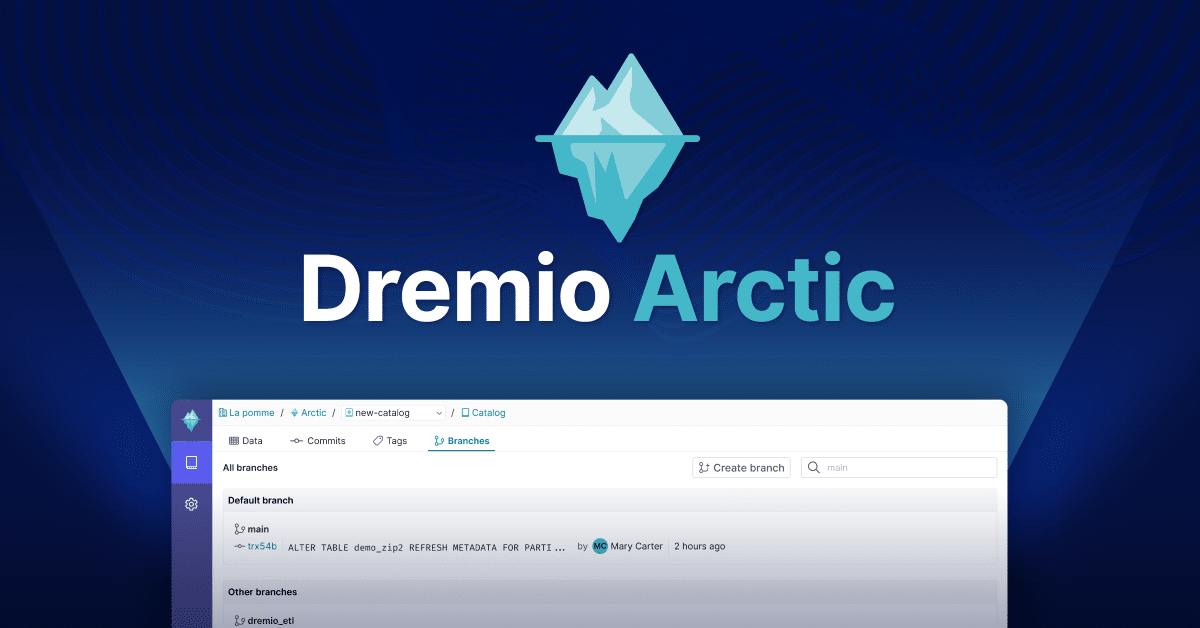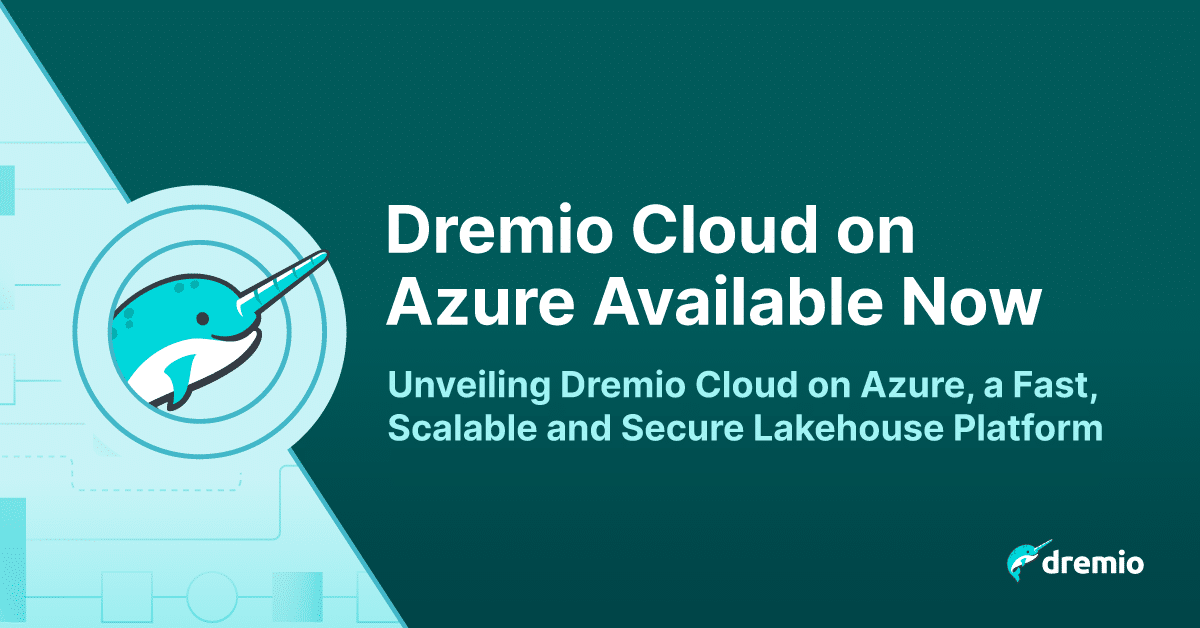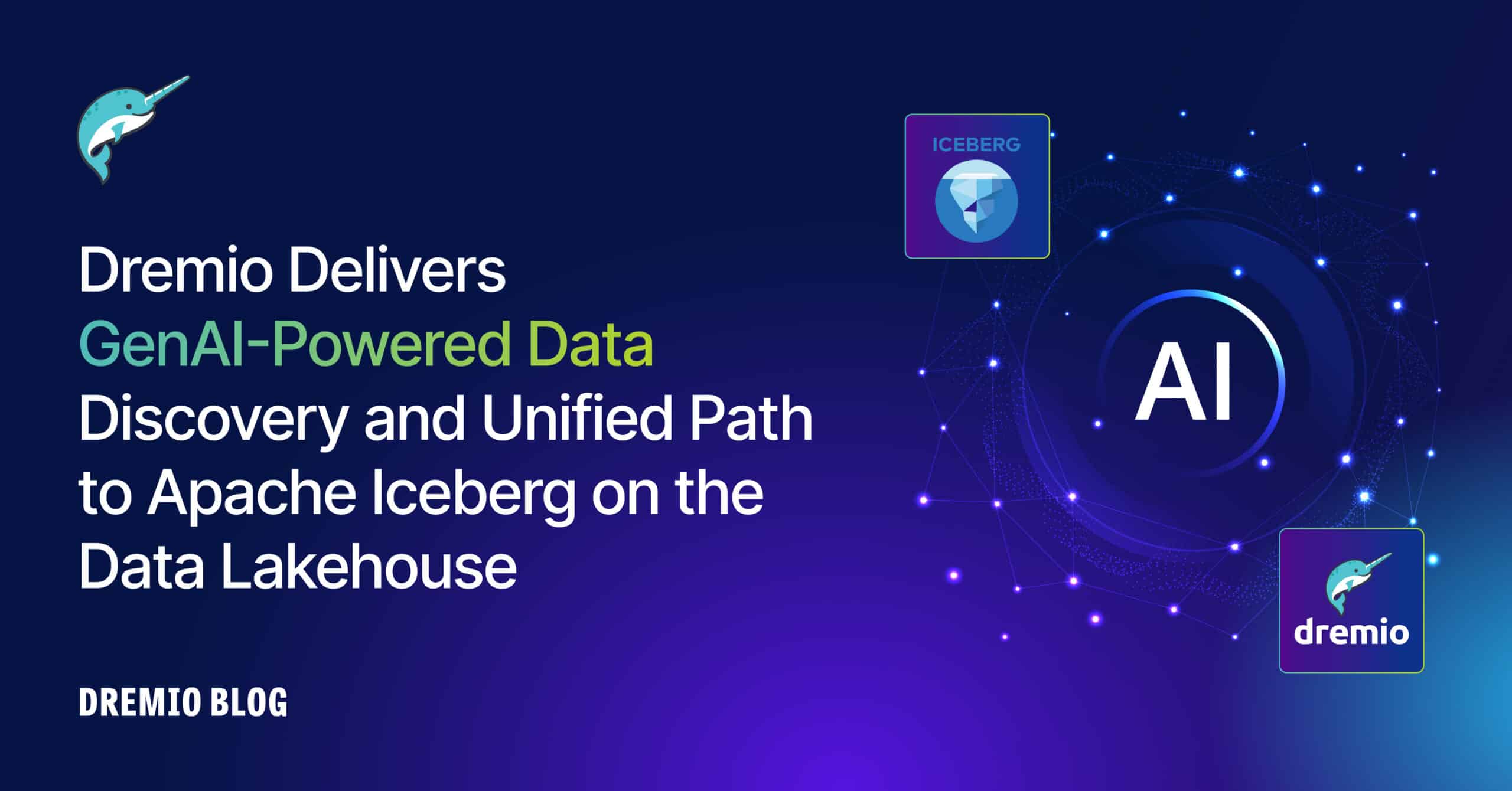12 minute read · August 16, 2023
5 Use Cases for the Dremio Lakehouse

· Senior Tech Evangelist, Dremio
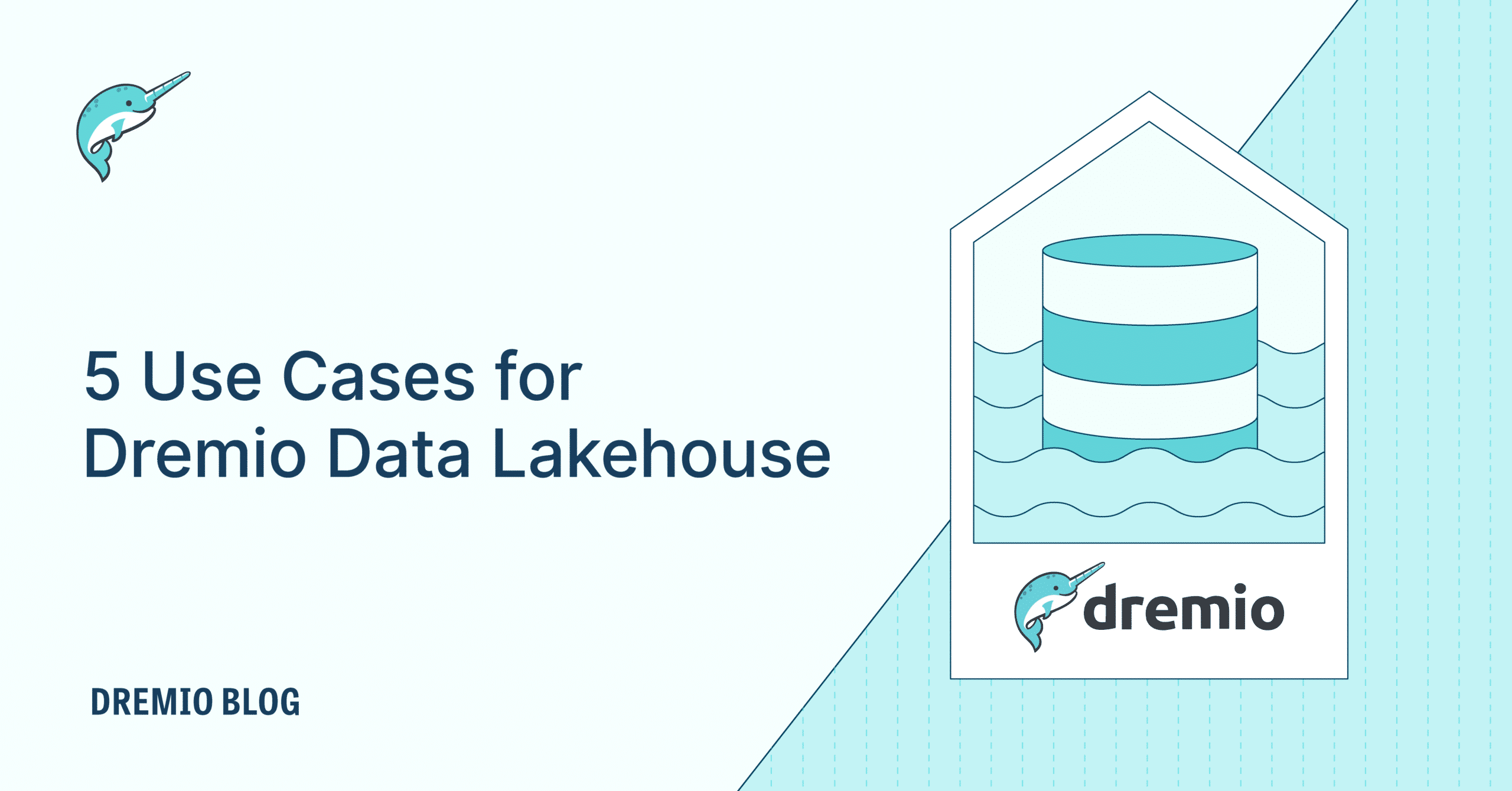
The Dremio Data Lakehouse has emerged as a game-changing solution in data analytics, combining the best of data lakes and data warehouses into a unified architecture. With its versatile capabilities, Dremio opens up a world of possibilities for organizations across various use cases in the realm of either modernizing or upgrading their current data systems, resulting in better performance, management and costs (warehouse offload, cloud migration, data mesh), or enabling new data capabilities to their data systems (data virtualization and customer-facing data applications). In this article, we explore five compelling scenarios where the Dremio Data Lakehouse excels.
Data Analytics Modernization Use Cases
These use cases will improve the cost, performance, and management of your current data workloads.
- On-prem → cloud migration: Seamlessly transition from on-premises data infrastructure to the cloud while leveraging the power and scalability of Dremio.
- Data warehouse offload: Optimize data processing and reduce costs by offloading heavy workloads from traditional data warehouses onto the Dremio Data Lakehouse.
- Upgrade existing data lake/data lakehouse: Data your existing data lake and data lakehouse enable faster queries and easier access to data.
New Data Projects Use Cases
These use cases extend functionality and possible workloads by unifying your data sources and delivering them to consumers in new ways.
- Data virtualization: Unleash real-time access and analysis of data from multiple sources with Dremio's data virtualization capabilities, eliminating the need for data replication.
- Customer-facing analytics apps: Empower your organization to build robust customer-facing analytics applications that provide real-time insights, enhancing the user experience.
As you explore these use cases, we encourage you to embark on a Dremio Test Drive, where you can experience firsthand the power and versatility of the Dremio Data Lakehouse. Discover how Dremio revolutionizes data analytics, accelerates decision-making and unlocking the true potential of your data.
On-Prem to Cloud Migration
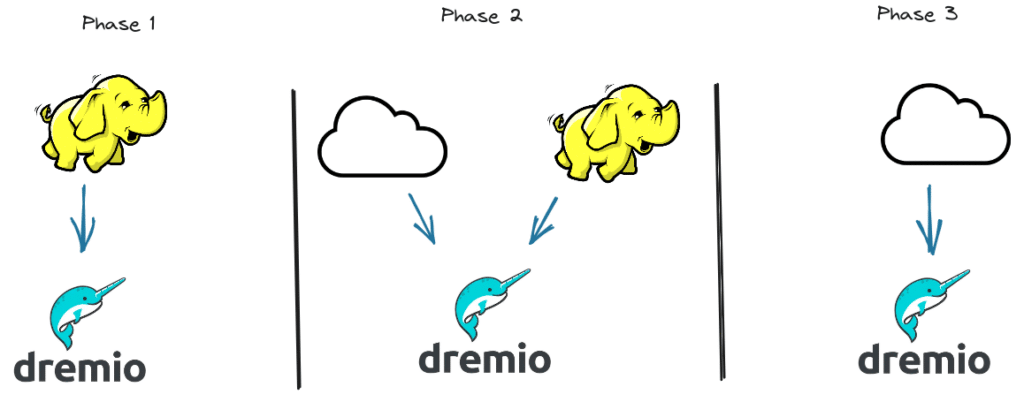
Migrating from on-premises to cloud infrastructure offers several key benefits. First, it provides scalability, allowing businesses to easily accommodate growing data volumes and increasing demands. Cloud infrastructure also offers flexibility, enabling organizations to scale resources up or down as needed and access a wide range of cloud-based services. Additionally, migrating to the cloud often saves cost by eliminating the need for on-premises hardware maintenance and reducing operational costs.
Dremio is crucial in facilitating migration by providing an on-premises solution that seamlessly integrates with cloud storage. By deploying Dremio on-prem, businesses can immediately enhance performance and ease of use. Dremio acts as a bridge, allowing users to access data through a unified interface regardless of whether it resides on-prem or in the cloud. This dramatically simplifies the workflow for end users and reduces friction when moving data between on-premises and cloud environments.
Data Warehouse Offload
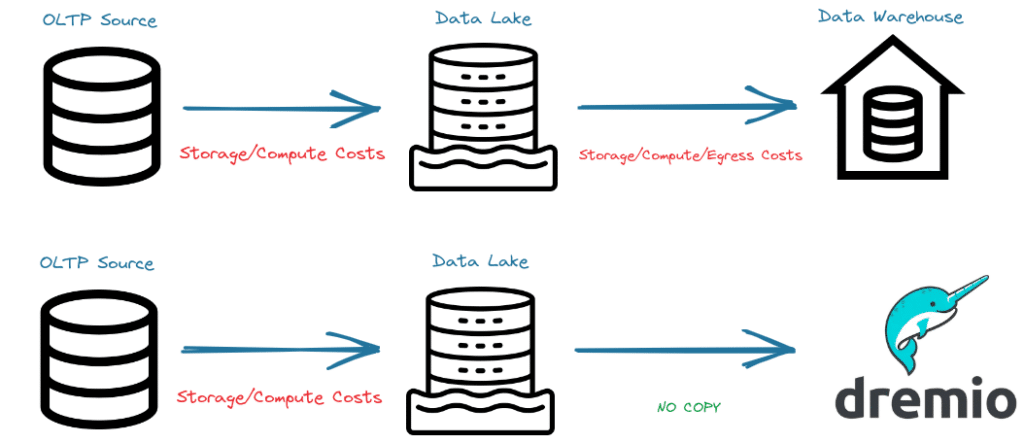
Due to data's increasing volume and complexity, traditional data warehouses often become expensive. As data grows, the storage and compute costs of maintaining a data warehouse can quickly escalate. Additionally, the rigid structure of data warehouses may not be well-suited to handle the diverse data types and formats that organizations deal with today. This can lead to complex data transformations and schema modifications, reducing the overall cost and time required for data processing.
Dremio, in conjunction with data lakehouse architecture, offers a solution to optimize data processing and reduce costs. Organizations can leverage the scalability and cost-effectiveness of cloud-based storage and computing resources by offloading heavy workloads from traditional data warehouses to the data lakehouse. The data lakehouse combines the best aspects of data lakes and data warehouses, allowing businesses to store raw and structured data in a centralized repository while enabling on-the-fly data processing and analytics.
Dremio's advanced capabilities, such as unified data access and query acceleration, empower organizations to access and process data within the data lakehouse efficiently. By eliminating the need for costly data transformations and redundant storage in data warehouses, businesses can significantly reduce storage and compute costs. Dremio's optimized query engine ensures fast and efficient query execution, enabling users to analyze large volumes of data without compromising performance. The combination of Dremio and the data lakehouse architecture offers a cost-effective and scalable solution for offloading data warehouse workloads, unlocking new possibilities for data-driven insights while reducing operational expenses.
Data Virtualization

Data virtualization is a technology that allows organizations to access and analyze data from multiple sources in real time without data replication. Traditional approaches to data virtualization often face challenges such as slow query performance, data inconsistency, and a lack of scalability. These limitations can hinder organizations from harnessing the full potential of their data and making informed business decisions.
Dremio's data virtualization capabilities offer a solution to these challenges by leveraging its unique feature called data reflections. Data reflections in Dremio are automatically generated and maintained Apache Iceberg-backed materializations that improve query performance and accelerate data access. By analyzing query patterns and data usage, Dremio optimizes the execution of queries by matching them against reflections that best accelerate the query. This approach eliminates the need for repetitive data virtualization push-downs and enhances the overall performance of real-time data analysis.
Moreover, Dremio's data reflections address data inconsistency concerns by ensuring that the reflection represents the information from the underlying sources. As data changes in the source systems, Dremio updates the data reflections manually or on a schedule, providing users with accurate and reliable insights. This eliminates the risk of working with stale or outdated data in a virtualized environment.
With Dremio's data reflections, organizations can unleash the power of real-time data virtualization, gaining performant and consistent access to diverse data sources for analysis and decision-making. Eliminating data replication reduces complexity and improves data governance, as a single source of truth is maintained within the underlying data systems. Dremio's data virtualization capabilities enable organizations to break down data silos, enhance collaboration, and unlock valuable insights from their entire data landscape.
Upgrade Data Lake/Data Lakehouse

Data lakes and lakehouses have revolutionized how organizations store and manage their data. However, traditional data lakes often face performance and ease-of-use challenges. Querying large volumes of data stored in a data lake can be time-consuming, as it requires scanning and processing vast amounts of data. Additionally, data lakes' complex and unstructured nature can make it difficult for end users to access and analyze the data effectively.
Dremio addresses these challenges by providing advanced capabilities that make data lakes faster to query and easier to use. With its distributed query engine, Dremio leverages powerful optimization techniques to accelerate query performance on data lakes. By intelligently caching and indexing data, Dremio minimizes the need for full scans and enables faster query execution, delivering near-real-time insights to users.
Furthermore, Dremio offers a self-service data exploration and analytics platform that simplifies data access and analysis in data lakes. Its intuitive interface lets users quickly discover, explore, and transform data without requiring deep technical expertise. With features like a semantic layer and data catalog, Dremio provides a unified view of the data lake, making it easier for users to navigate and access the relevant data they need for their analysis. The self-service capabilities empower business users and data analysts to derive insights directly from the data lake, reducing the dependency on IT teams and accelerating the time to insight.
By upgrading your data lake or data lakehouse with Dremio, you can unlock the full potential of your data. Faster queries and easier access to data empower organizations to make data-driven decisions in a timely manner, improving operational efficiency and driving innovation. Dremio's advanced capabilities transform data lakes into high-performance analytics platforms, enabling users to extract maximum value from their data assets.
Customer Facing Data Applications

In today's data-driven business landscape, organizations increasingly focus on building customer-facing analytics applications to provide real-time insights and enhance the user experience. These applications enable businesses to deliver personalized and valuable information to their customers, driving engagement, satisfaction, and loyalty. However, building such applications can be challenging, especially when data is dispersed across various sources and systems.
Dremio addresses these challenges by providing federated data access capabilities that unify all data sources into a single virtual layer. With Dremio, organizations can seamlessly connect and access data from multiple locations, including on-premises systems, cloud storage, databases, and data lakes. By leveraging Dremio's federated data access, developers can easily retrieve and integrate data from various sources without complex data pipelines or replication.
Dremio further simplifies the development of customer-facing analytics applications through its comprehensive set of APIs and interfaces. The Dremio REST API, JDBC/ODBC drivers, and Arrow Flight interfaces enable developers to interact with the unified data layer and access the desired data in real time. This seamless integration allows developers to build robust and responsive applications that leverage the power of Dremio's accelerated query performance and self-service data exploration capabilities.
With Dremio, organizations can unlock the full potential of their customer-facing analytics applications by seamlessly accessing and integrating data from disparate sources. By providing real-time insights to customers, businesses can enhance the user experience, improve decision-making processes, and gain a competitive edge in the market. Dremio's federated data access and comprehensive API support empower organizations to build scalable and agile customer-facing analytics applications that deliver actionable insights to drive business growth.
Conclusion
In conclusion, the Dremio Data Lakehouse offers a versatile and comprehensive solution for a wide range of use cases, empowering organizations to optimize data processing, reduce costs, and enhance data-driven decision-making. With its capabilities in on-prem to cloud migration, data warehouse offload, data virtualization, upgrading data lakes and lakehouses, and building customer-facing analytics applications, Dremio provides the tools and functionalities to streamline operations and unlock the full potential of data assets. By leveraging Dremio's unified interface, advanced query optimization, and seamless integration capabilities, organizations can drive innovation, improve efficiency, and gain a competitive edge in today's data-driven landscape. Experience the power of the Dremio Data Lakehouse with a Test Drive and embark on a successful data-driven journey that revolutionizes your data analytics and unlocks actionable insights.
